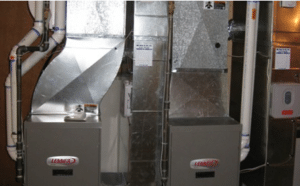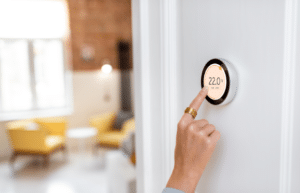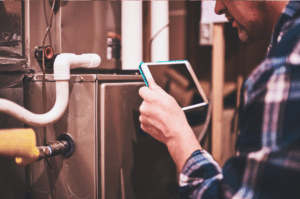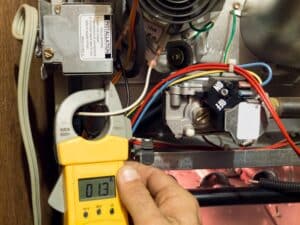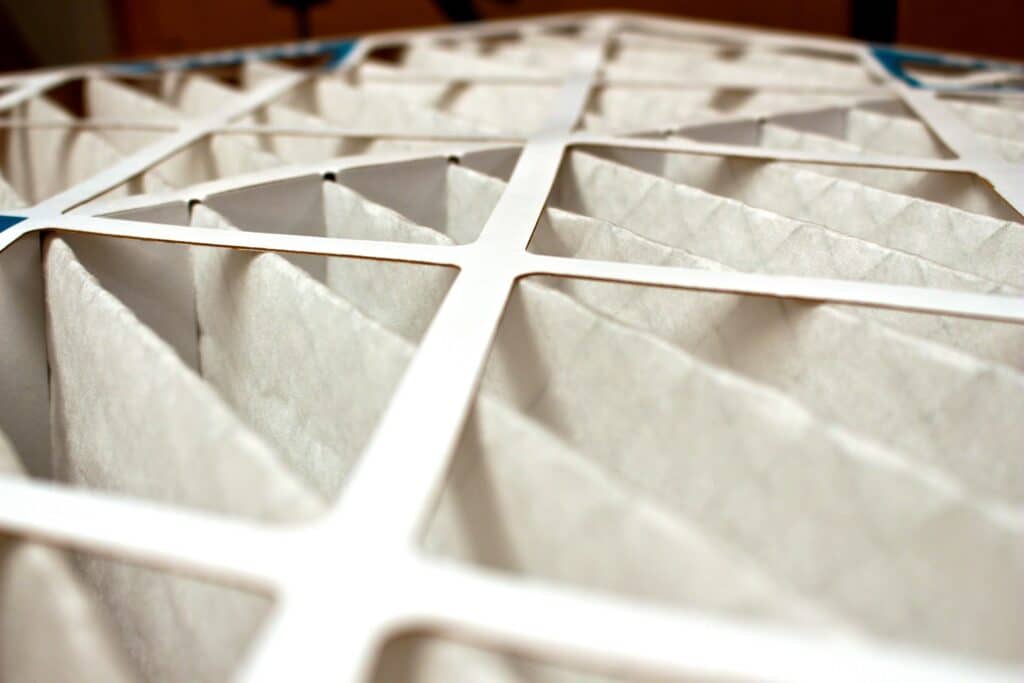
Changing your furnace filter according to manufacturer’s instructions is one of the easiest things you can do yourself to help maintain your HVAC system. The furnace filter helps remove dust and debris from the furnace’s intake. Without it, that dust could start clogging furnace parts, making it work harder and reducing its efficiency. It can also cause things to break down and result in needing repairs or a replacement far before the furnace’s expected lifespan.
More than that, you want your air filter to be removing particles from your indoor air. Dust, pollen, mold spores, pet dander, dust mite debris, and even bacteria and smoke are all removed with the right air filter.
What furnace filter should you buy?
Table of Contents
ToggleCheck the manufacturer’s instructions.
You need a furnace filter that will fit your furnace manufacturer’s specific requirements. A filter that is too small or too big will not do its job correctly. You cannot have dusty air flowing around the sides of the filter. Furnace filters come in a range of sizes, including a variety of thicknesses.
The easiest way to check what kind of filter you need is to check your furnace manufacturer for specifications. If you’re the last one to have changed the furnace filter, check the size on the old filter. You can purchase furnace filters at a building supply store or hardware store, from your HVAC contractor and supplier, or even order them online.
Learn about MERV
When you’re looking at furnace filters, you’ll notice that they will have a MERV rating written on the side of the frame or the packaging. MERV stands for the Minimum Efficiency Reporting Value. MERV is a measurement scale that can help you better know the filter’s precision and accuracy, filtering out dust and debris from your HVAC system. The rating comes from the size of the particle that filters will allow through.
For example, a furnace filter with a 1 to 4 MERV rating will keep out particles like pollen, sawdust, carpet fibres, and dust mites. A MERV rating of 5-8 will keep out mold spores, dust mite debris, and dander. A MERV rating of 9 to 12 can remove fine dust, auto emission particulates, and even nebulizer droplets. Finally, the highest MERV value from 12 to 16 can remove bacteria, smoke, paint pigments, and droplets created from sneezing and coughing. Read more about MERV ratings here.
What is the right MERV rating for your needs?
Most residential furnace filters are in the 4 to 12 range. Places like hospitals and surgical rooms will use a MERV filter rated up to 16, but a rating higher than MERV 13 not necessary in a home unless someone in the house has asthma or another health issue. In fact, the higher the MERV, the more restricted the airflow, which means it can clog faster and reduce efficiency. You need to find that sweet spot between filtering the air properly, without limiting its flow into the HVAC system. Otherwise, you’ll cause your furnace to work too hard and reduce efficiency.
Most furnace manufacturers will recommend a MERV 4, though many homeowners find this rating to be a little low. This filter will remove about 80% of particles from the air that are 50 microns or larger before it enters the system. It will not remove smoke, pollen, and other allergens. That means it’s not good enough if you need cleaner air quality but could work if no one in the home is bothered by allergies or asthma.
Best MERV rating for indoor air quality
If you want the best balance between filtration and efficiency, consider a rating of MERV 8 to 13. Though they are more expensive, they can trap up to 95% of particles that are 5 microns or larger depending on the filter. That should do just fine for a household and can make a big difference regarding indoor air quality.
However, if you have someone in the house with allergies or asthma, you could consider a MERV 12 or higher. Just make sure you replace the filter regularly, so your furnace doesn’t burn out prematurely. These filters can capture up to 99% of particles as small as 0.3 microns, but the furnace fan will always running as it pushes air through the filter, which means it will cost more in energy. If you let the filter clog, it can cause damage to the heat exchanger or blower motor.
What is FPR?
You might see that some furnace filters have an FPR rating instead of a MERV rating. FPR stands for Filter Performance Rating and is a rating system developed by The Home Depot for certain filter brands they sell in the store.
To compare, an FPR 5/Green would be like a MERV 8. An FPR 7/Red would equate to a MERV 8+ and an FPR 10/Blue to a MERV 11+.
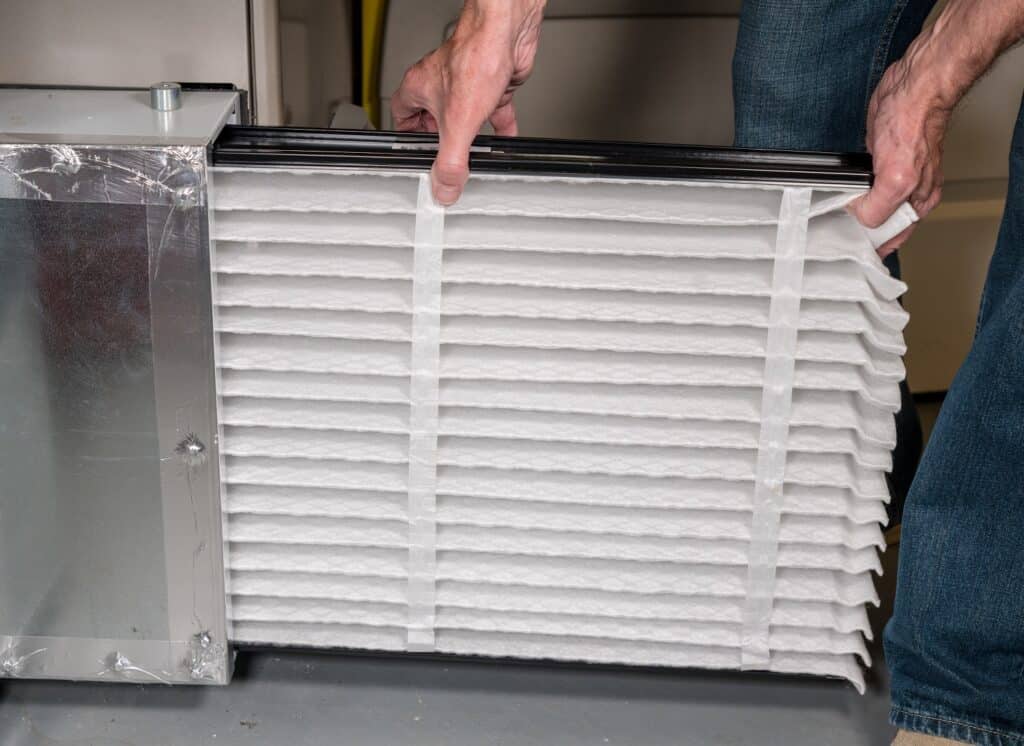
8 Best Furnace Filters
Now you understand how furnace filters are rated, and why they need to be changed. It is time to choose the right furnace filter brand and type.
1. Honeywell Elite Allergen Pleated Air Filter MERV 13 (FPR 10)
This is one of the highest-rated and reviewed furnace filters on the market. The Honeywell Elite Allergen Pleated filter comes in a wide range of sizes. You should be able to find one for your furnace. Because of its high MERV rating, it can catch particles as small as 0.3 microns. Things like lint, dust, dander, mold spores, microscopic allergens, bacteria, and even smoke and smog don’t stand a chance at passing through this filter. Its frame is resistant to moisture and can noticeably reduce allergy symptoms for those living in the house. This filter needs replacing every three months.
2. Filtrete Micro Allergen Defense Air Filter MERV 11
This furnace filter is the best choice for people who have allergies because it is specially designed to keep allergens out of the HVAC system. It is rated with a MERV 11. It also has an electrostatic charge which can help attract and then capture finer allergens. Dust, lint, mold spores, smoke, pet dander, dust mite debris, and other particles will be blocked. They come in a range of sizes and can significantly reduce allergens blowing around the home. Those with allergies in the family will be able to tell the difference right away. This filter requires replacement every three months and typically comes with two filters in a pack. Though the filter is excellent for people with allergies, it will not remove bacteria or viruses from the air and will not block sneeze and cough particles.
3. Honeywell Superior Allergen Pleated Air Filter MERV 11 (FPR 9)
This furnace filter will remove particles as small as 1 micron from the air. Many choose it if they are concerned about mold spores in the air, as it’s known for maintaining healthy indoor air quality. It can block dust, lint, mold spores, pollen, bacteria, debris, smoke, and even virus carriers. The frame is moisture resistant as well. It’s available in a variety of sizes and requires replacement every three months.
4. Nordic Pure Pleated Air Filter MERV 13
Homeowners who want better air quality will choose this furnace filter. This filter, in particular, is popular for those wishing to rid a home of smoke and smoke smells caused by cigarettes, fireplaces, and cooking. With a MERV rating of 13, it removes smoke, as well as other finer particles including dust, pollen, dander, dust mite debris and mold spores. It also has an electrostatic charge and can capture even more airborne particles, including some viruses.
Because of the higher MERV rating, you should check it every 30 days. Replace it every three months at a minimum. Sometimes this filter can get dirty enough to need replacing after just one month because it’s blocking nearly everything that goes through it. It’s an excellent choice for people with allergies or who want to remove smoke from the indoor air. It also might fit smaller than it should on many furnaces, so you will have to find a way to seal it properly with foam weather stripping.
5. FilterBuy Pleated Air Filter MERV 8
The FilterBuy Pleated furnace filter is the best choice for households that have pets. It has a slightly lower MERV rating compared to the other filters mentioned so far, but can still remove pet dander, hair, debris, dust, lint, and pollen from the air. It also comes in a range of sizes, and the manufacturer recommends it gets changed every three months. However, if you do have pets, you should be checking it at a minimum once a month as it can become clogged with pet hair and dander. If your furnace filter is clogged, it will cause more strain on your furnace and diminish efficiency.
The FilterBuy Air Filters come in packs of 4 and are reasonably priced. Typically, they don’t fit as snug as other filters because it measures up slightly smaller than specifications. You can work around that by finding a way to seal the frame to your furnace by using weather stripping foam or the like.
6. Rheem Basic Household Pleated Air Filter MERV 8
If you’re looking for a budget air filter, but don’t want to sacrifice quality too much, this might be the best compromise. Where the higher-end filters can get costly, this hardworking filter does the job for less cost. It is rated MERV 8, so it can still remove pollen, dust, and dander from the air. It won’t remove as small particles compared to the others, but it can still help minimize symptoms for those with allergies, reduce dust, and keep the debris out of your HVAC system. This budget-friendly option needs replacing every three months.
7. Aprilaire 213 Air Filter MERV 13
This filter is known to remove over 90% of particles between 0.3 and 1.0 microns that cause allergy symptoms. It is rated with a MERV 13. So, it can also remove bacteria, pollen, mold spores, airborne dust and other contaminants. This furnace filter has a self-seal technology, which gives it a tighter fit than other filters, thus removing even more particles. It is limited in sizes but will fit Aprilaire models and any furnace that has the same measurements. This filter needs replacing every six months. Change it more often if you have pets or a lot of dirt and dust in the house.
8. Lennox X66673 Filter Media MERV 11
This filter is thicker than other filters, so it will not fit some furnaces. It has a MERV rating of 11. This filter is electrostatically charged to attract and hold particles as small as 0.3 microns. That means pet dander, pollen, dust, and other allergens will be caught in the filter before it reaches the HVAC system. Because it is larger and thicker, it can essentially hold more dust and debris. Holding more dirt allows it to operate at peak efficiency with less air resistance. This filter needs to be changed every six months, or sooner if you have pets in the house.
Always check with your HVAC technician
If you are planning on changing the type of air filter you typically use, have a chat with your HVAC technician first. They will inspect your system and determine the right type of filter for your furnace, budget, and air quality needs. They might not recommend higher quality or higher MERV rating. This depends on if they don’t think your furnace can handle the restricted airflow. However, they can suggest the best alternative for maximum filtration and improved indoor air quality.
Commit to regular furnace maintenance
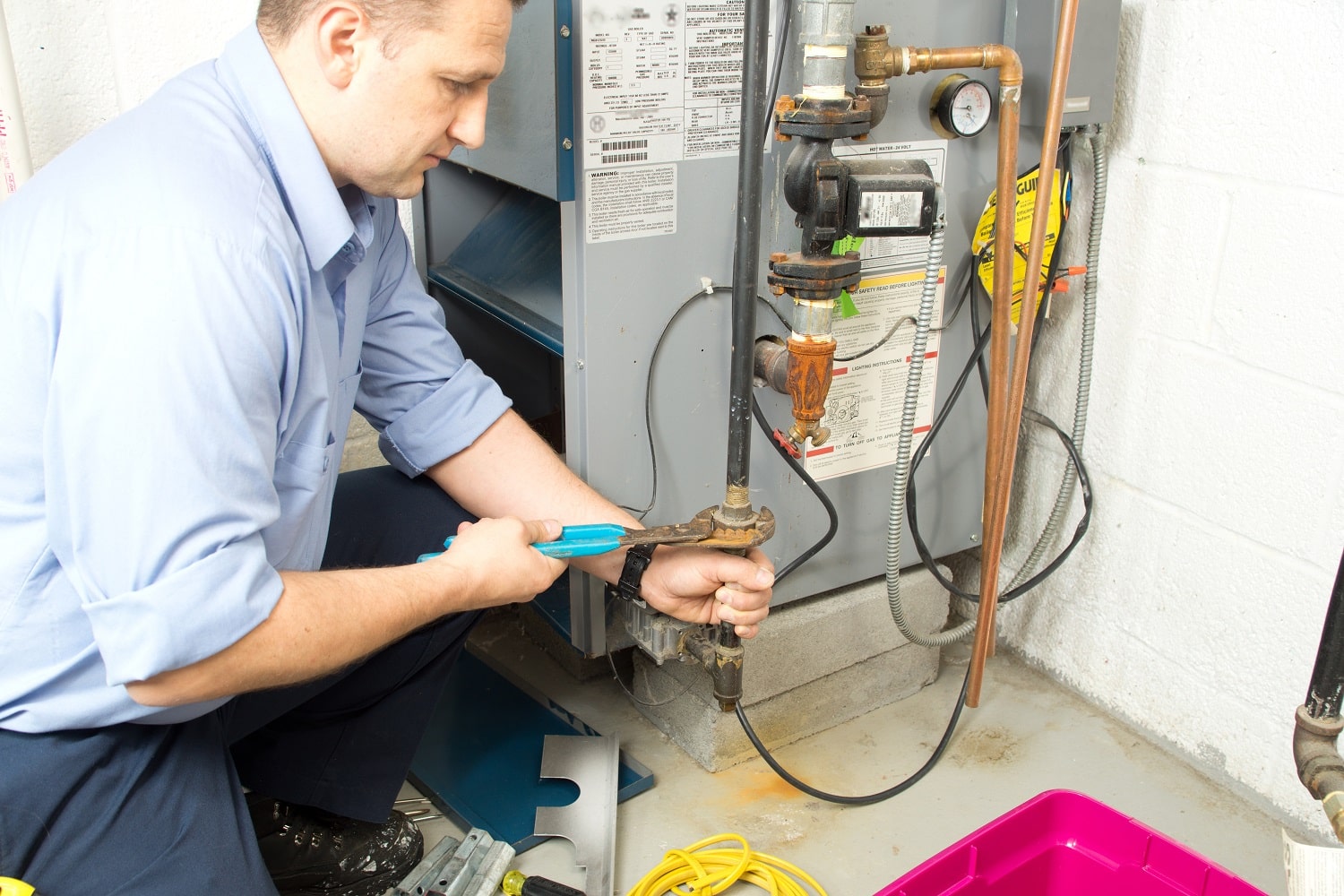
You should also have an experienced HVAC company inspect and service your HVAC system every year. They can give it a multi-point inspection that will discover any minor issues with your furnace. Finding them now can prevent a major break down and expense. They will clean the furnace and give it a tune-up, so it’s running at peak performance. During your furnace service, they will also change out your furnace filter for you. They will make recommendations on how often you need to be changing the filter based on your furnace filter of choice and your furnace.
If you neglect your HVAC system, it can start running at low efficiency. Not only will this mean higher energy bills, but it can also cause additional strain on the system. Like anything mechanical, if it is overworked, it will wear out sooner. Don’t wait until your blower fan burns out, or another issue happens. Instead, invest in preventative furnace maintenance and don’t forget to change that furnace filter!

Find a RenovationFind Certified furnace repair company in your city!
| Alberta | British Columbia | Saskatchewan |
| Edmonton Furnace Repair | Kelowna Furnace Repair | Regina Furnace Repair |
| Calgary Furnace Repair | Vancouver Furnace Repair | Saskatoon Furnace Repair |
| Victoria Furnace Repair | ||
| Manitoba | Nova Scotia | Newfoundland |
| Winnipeg Furnace Repair | Halifax Furnace Repair | St. John’s Furnace Repair |
| Ontario | Quebec | New Brunswick |
| Toronto Furnace Repair | Montreal Furnace Repair | Fredericton Furnace Repair |
| Barrie Furnace Repair | Quebec City Furnace Repair | Moncton Furnace Repair |
| Hamilton Furnace Repair | Saint John Furnace Repair | |
| Kitchener Furnace Repair | ||
| London Furnace Repair | ||

